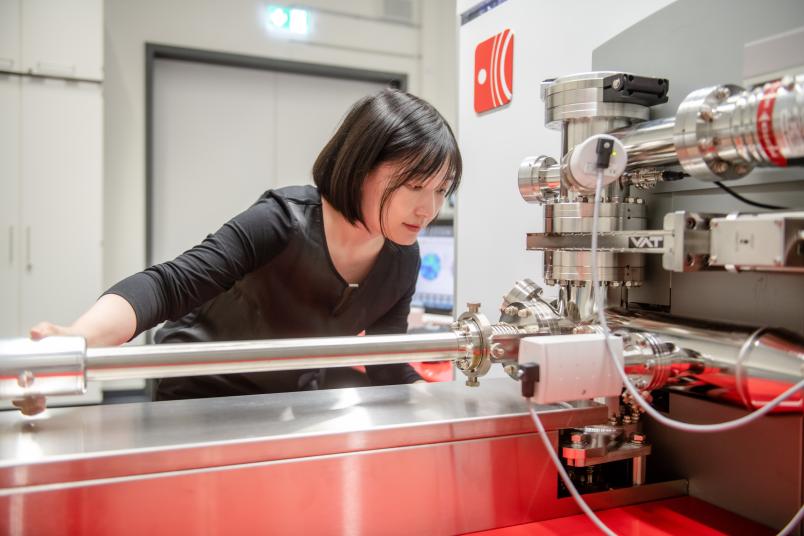ERC Grant
Two million euros for investigating the processes in batteries
Improving safety and durability of batteries requires a better understanding of processes that take place inside them at the atomic level. Tong Li intends to lay the foundations for this as part of a Consolidator Grant.
Accounts of exploding cell phone batteries and electric cars on fire are a constant reminder of the dangers of batteries with high energy densities. However, when it comes to developing longer-lasting and safer batteries, we don’t yet have detailed knowledge of the electrochemical processes inside the battery, or more precisely at the interface between the electrode and the electrolyte. Professor Tong Li hopes to close this gap. She is Professor for Atomic-Scale Characterization at Ruhr University Bochum, Germany, and has been awarded a Consolidator Grant by the European Research Council (ERC).
Using a highly specific method, namely atomic probe tomography, the Bochum-based researcher is able to better understand electrochemical processes with atomic resolution. Tong Li will receive approximately 2.2 million euros over five years for her ERC project “Unveiling Atomic-Scale Elemental Distribution of Electrode/Electrolyte Interfaces and Interphase in Batteries”. The project is due to start in 2024.
Visualizing processes at the interface one atom at a time
Lithium-metal batteries contain two electrodes between which lithium ions move through an electrolyte solution. What happens at the interface of electrode and electrolyte is crucial for the safety and performance of the battery. Important is, on the one hand, the interface itself, i.e. the point where solid electrode and liquid electrolyte meet. On the other hand, the so-called solid electrolyte interphases play a role, i.e. the physical states that occur in the region of the interface. “If you can control the stability of the interface and the interphases, you can make batteries much safer and more efficient,” says Tong Li.
For example, Tong Li is interested in the phenomenon of dendrite formation: Lithium ions can be deposited on one of the electrodes and form branched structures that permeate the electrolyte. If they penetrate the separator, which is supposed to electrically isolate the electrodes from each other, and reach the cathode, they cause a short circuit.
As part of the ERC grant, Tong Li plans to investigte how the electrode/electrolyte interfaces and interphases affect the lithium deposition. “We want to gain a better understanding of the deposits in order to prevent them,” says the materials researcher. Tong Li uses atom probe tomography for these and other investigations of materials for energy conversion and storage. This enables her to identify individual elements and determine their three-dimensional position in the material.


